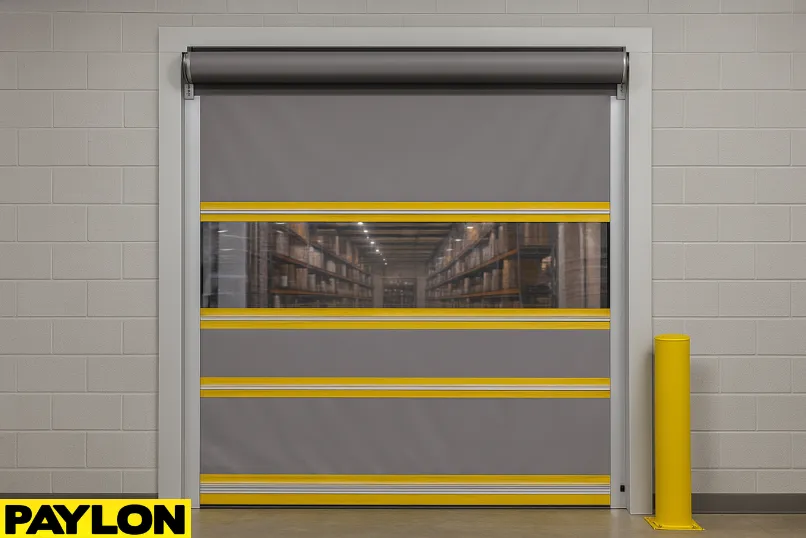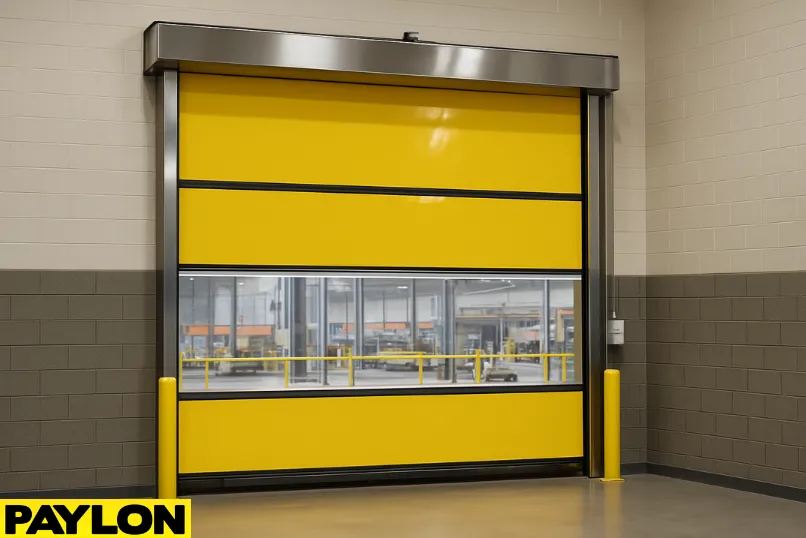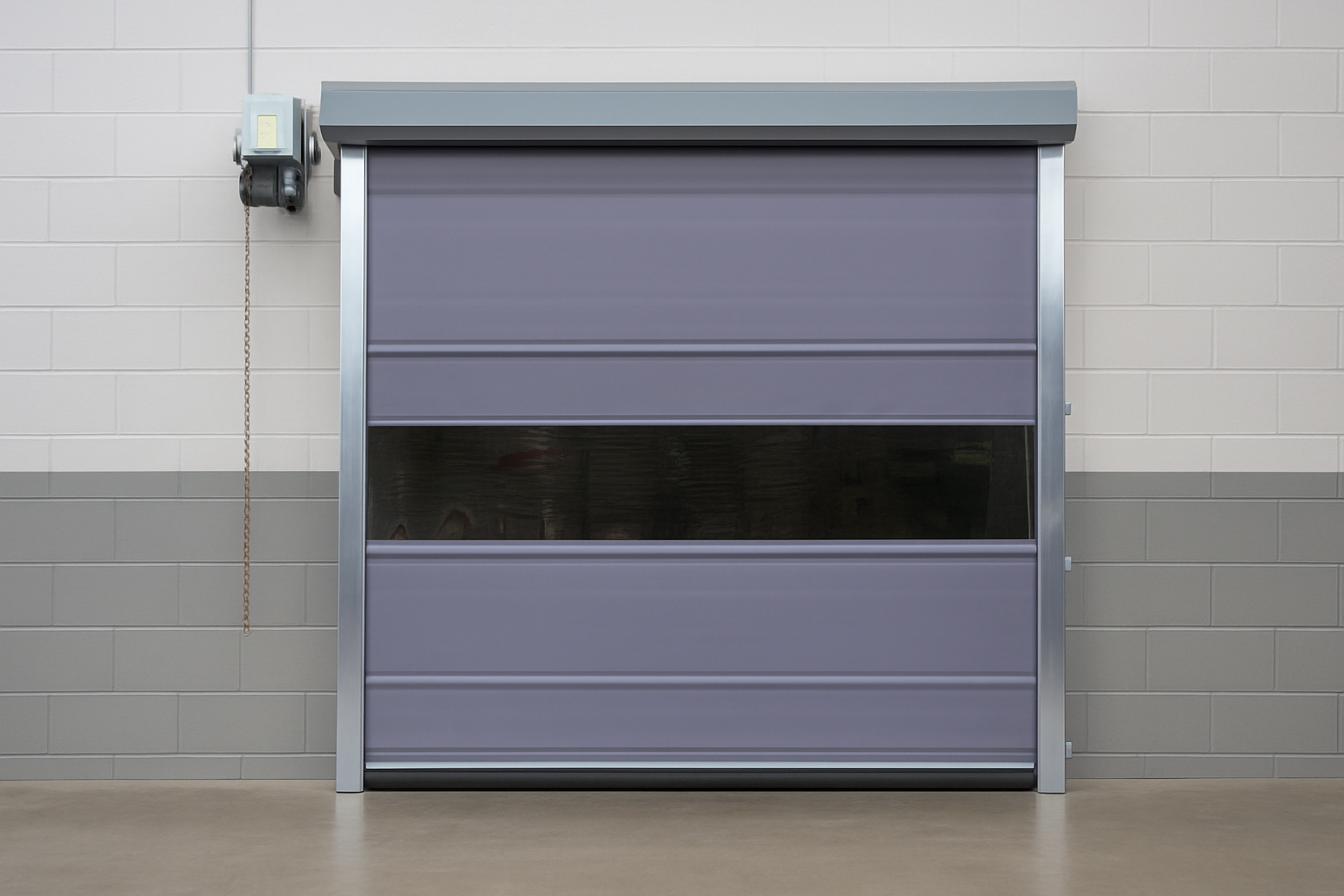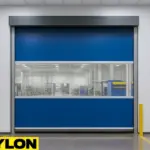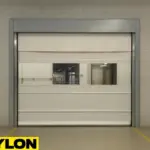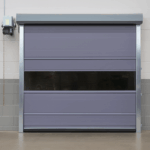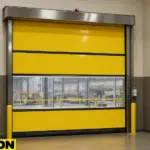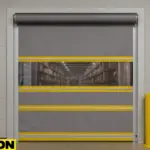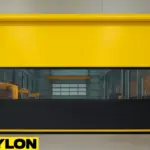Manual vs. Motorized Roll-Up Doors
Explore which industrial roll-up door fits your facility best, manual, motorized low-use, or high-speed heavy-duty models.
Industrial roll-up vinyl doors, improve efficiency, safety, and access across busy facilities. This guide compares manual, motorized (low-use), and motorized (high-use) doors, breaking down how each works, their pros and cons, and where they fit best. You’ll also find a comparison table and FAQs to help you choose with confidence.
Which Roll-Up Door Fits Your Facility?
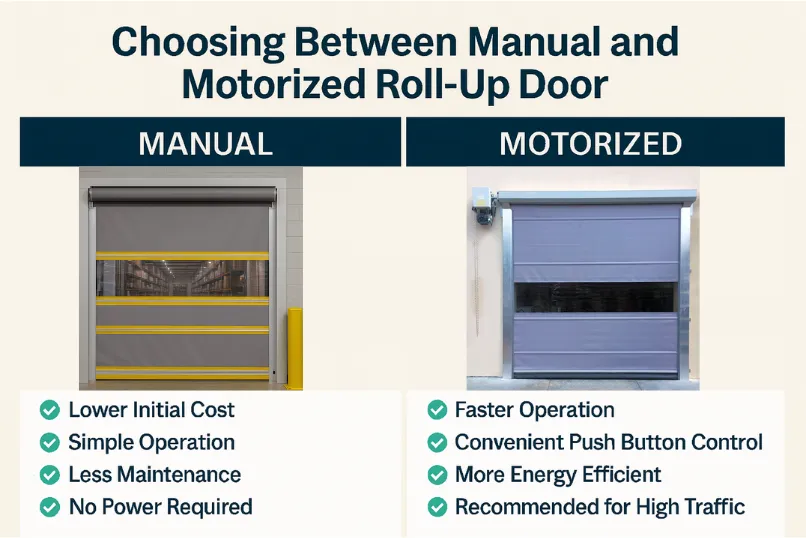
Choosing the right industrial roll-up door can dramatically impact your facility’s efficiency, safety, and bottom line. This quick comparison helps you see at a glance whether a manual, low-use motorized, or high-use motorized door fits your space best. From budget-friendly reliability to high-speed automation, Paylon has solutions tailored for every kind of environment.
Manual Roll-Up Doors
Manual roll-up doors are a simple, cost-effective option for facilities that don’t require frequent or fast access. Using a spring-loaded mechanism or chain hoist, they open and close without the need for electricity, making them a reliable choice in straightforward setups.

✔️ Pros:
Cost-effective upfront. These doors are the most affordable option with no need for motors or electrical components.
Low maintenance needs. With fewer parts to service, they’re easy to keep in good working condition.
No power dependency. They’ll still work during power outages, ensuring uninterrupted access.
❌ Cons:
Higher upfront cost. The added motor and control system increase installation expenses.
Requires a power source. These doors depend on electricity, so a power outage could impact access unless there’s a backup system.
Some maintenance required. Motors and wiring occasionally need servicing to stay in good shape.
If your facility prioritizes simplicity, durability, and cost savings over speed and automation, a manual roll-up door could be the perfect fit. Next, we’ll take a look at motorized doors designed for light, occasional use, ideal for businesses ready to add a bit more convenience to their workflow.
Motorized Roll-Up Doors (Low-Use Applications)
Low-use motorized roll-up doors are designed for occasional access, perfect for areas that need more convenience without going full high-speed. They operate using a compact in-tube motor and are typically activated by a wall switch, remote, or pull cord, making day-to-day tasks easier for your team.

✔️ Pros:
Faster than manual doors. Opening and closing is quicker and smoother, which helps save time in routine tasks.
More convenient to operate. With push-button controls, staff can open the door with minimal effort.
Offers basic safety features. Many models include motion sensors or stop functions to help prevent accidents.
❌ Cons:
Higher upfront cost. The added motor and control system increase installation expenses.
Requires a power source. These doors depend on electricity, so a power outage could impact access unless there’s a backup system.
Some maintenance required. Motors and wiring occasionally need servicing to stay in good shape.
If your facility doesn’t need constant access but could benefit from a little more speed and ease, a low-use motorized door is a practical step forward. In the next section, we’ll explore high-use motorized doors, built for demanding environments where performance and reliability are non-negotiable.
Motorized Roll-Up Doors (High-Use Applications)
For facilities that demand fast, frequent access, high-use motorized roll-up doors are built for performance. With jackshaft or side-mounted motors and open speeds of 20 to 50 inches per second, they’re ideal for high-traffic environments where efficiency and reliability are non-negotiable.
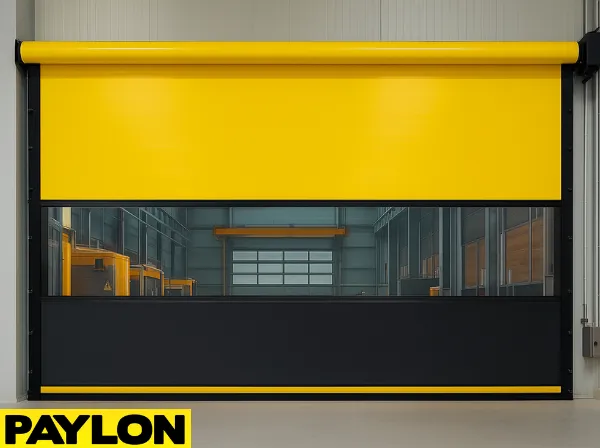
✔️ Pros:
High-speed access. These doors open and close quickly to keep traffic moving without bottlenecks.
Boosts operational efficiency. Less downtime at access points means smoother logistics and faster turnarounds.
Energy-efficient performance. Faster open-close cycles reduce air exchange, ideal for temperature-controlled spaces.
❌ Cons:
Highest initial investment. These doors come with a higher price tag due to their specialized motors and built-in tech.
Power reliability is crucial. If power goes out, operations may be impacted unless there’s a backup system.
Requires scheduled maintenance. Frequent use puts wear on components, making upkeep more important than with other types.
If your operations depend on speed, safety, and uninterrupted workflow, a high-use motorized roll-up door is a smart investment. Next, we’ll break down all three door types side by side, so you can clearly compare and choose what’s best for your facility.
Side-by-Side Comparison: Manual vs. Motorized Roll-Up Doors
With the core features of each door type now covered, here’s a quick reference chart to help you compare them at a glance. This quick chart highlights the most important differences between door types, so you can compare features, spot trade-offs, and make a confident choice for your facility.
| Feature | Manual | Motorized (Low-Use) | Motorized (High-Use) |
|---|---|---|---|
| Cost | ✅ Most affordable option with no motor or wiring | ❌ Mid-range cost due to motor and basic electronics | ❌ Highest investment due to advanced motors and features |
| Speed | ❌ Slow, manual lifting required | ✅ Moderate speed suitable for occasional access | ✅ High-speed performance up to 50+ inches per second |
| Ease of Use | ❌ Requires physical effort to open and close | ✅ Operated by button, remote, or pull cord | ✅ Fully automated system with minimal manual input |
| Safety Features | ❌ No sensors; relies solely on user awareness | ✅ Basic motion sensors or stop features | ✅ Includes breakaway bars, auto-reverse, and advanced sensors |
| Power Required | ❌ None works without electricity | ✅ Requires power supply to operate motor | ✅ Requires power and should include backup for outages |
| Maintenance | ✅ Minimal upkeep, no electronics to service | ❌ Occasional motor or wiring maintenance needed | ❌ More frequent servicing required due to high usage |
| Best For | Low-traffic areas focused on affordability and simplicity | Retail backrooms, light-duty access points | Busy loading docks, warehouses, temperature-controlled zones |
This table brings all your options into focus, making it easier to decide which roll-up door aligns best with your facility’s workflow and goals.
Frequently Asked Questions
Frequently Asked Questions – Choosing the Right Roll-Up Door
1. What’s the difference between low-use and high-use motorized roll-up doors?
Low-use motorized doors are designed for occasional operation, like in retail backrooms or part-time docks. High-use models are built for heavy traffic, with faster speeds, tougher motors, and better safety systems.
2. Are motorized vinyl roll-up doors worth the investment?
If your facility sees moderate to high traffic, then yes. They save time, reduce labor costs, and help maintain energy efficiency, especially in climate-sensitive areas.
3. Can I upgrade from a manual door to a motorized one later?
Yes. Many Paylon roll-up vinyl doors are built to be upgradeable. If you start with manual, you can often retrofit a motor kit down the road.
4. What kind of roll-up door works best for cold storage facilities?
High-use motorized doors are your best bet. They open and close quickly, helping minimize air exchange and keep interior temperatures stable.
5. How do I know which vinyl roll-up door is right for my facility?
The best way to decide is to speak with a Paylon specialist. They’ll assess your space, traffic volume, and budget to recommend the perfect solution for your needs.
6. Do all motorized doors come with safety features?
Most motorized roll-up doors include at least basic safety features like motion sensors or stop functions. High-use doors offer advanced options like breakaway bars and auto-reverse.
7. How long does it take to install a motorized roll-up door?
Installation time depends on the door size and application. In general, it takes a few hours for a standard setup, especially when done by an experienced installer.
8. Will a power outage prevent me from using my roll-up door?
Manual doors will still work as usual. For motorized models, having a manual override or backup power option is recommended for uninterrupted operation.
9. How often do roll-up doors need maintenance?
Manual doors require very little maintenance. Motorized versions, especially in high-use areas, benefit from regular checkups to ensure motor health, sensor function, and overall safety.
10. Can I customize the size and color of my vinyl roll-up door?
Yes! Paylon offers a wide range of customization options to match your facility’s specifications and branding needs.
Conclusion: Choosing the Right Roll-Up Door Made Simple
Whether you run a small storage space or a high-traffic warehouse, there’s a roll-up door that fits your workflow. Manual options are great for simplicity and low costs. Motorized doors, whether for light or heavy use, offer speed, convenience, and better control.
The key is to match the door type with your usage level, safety requirements, and long-term goals. And if you’re still weighing options, our experts are just a call away to guide your next step.

